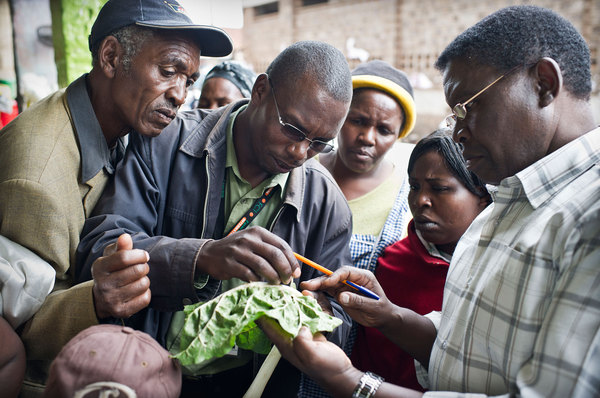Delivering services to places that are hard to reach
In the midst of its highly challenging surroundings, the INIA (National Institute of Agricultural Innovation) Experimental Station of Baños del Inca in Cajamarca offers an advisory service for smallholder farmers. Since 2013, when an agreement was signed between Plantwise and INIA, plant doctors Eng. Fernando Escobal Valencia and Eng. Marieta Cervantes Peralta operate plant clinics,…
Sembrando las semillas de la sostenibilidad en Achuapa, Nicaragua
La Cooperativa Juan Francisco Paz Silva (JFPS), fundada en 1990, comenzó la operación de un puesto para plantas en 2009. La cooperativa estaba buscando una manera de ofrecer asistencia técnica a sus productores asociados y los puestos de plantas proporcionan una manera para hacerlo. Inicialmente, dos técnicos, Oscar Calderón y Harold Espinoza, fueron capacitados como…
Sowing seeds of sustainability in Achuapa, Nicaragua
The Cooperative Juan Francisco Paz Silva (JFPS), which was founded in 1990, began operating a plant clinic in 2009. The cooperative was looking for a way to provide technical support to its member farmers, and the plant clinic provided a means to do so. Initially, two technicians, Oscar Calderon and Harold Espinoza, were trained as…
Utilizando los módulos y la metodología de Plantwise para reforzar el currículo en UCATSE
UCATSE (Universidad Católica Agropecuaria del Trópico Seco) es una universidad privada con financiamiento del Estado, que comenzó a operar un puesto para plantas durante la iniciativa Clínica Global de Plantas (GPC) en 2005. Con el inicio del programa Plantwise en Nicaragua en 2012, UCATSE incorporó la participación de los estudiantes en el puesto para plantas…
Using the Plantwise training modules and approach to strengthen the curriculum at UCATSE
UCATSE (Universidad Católica Agropecuario del Trópico Seco) is a private university with state funding that began operating a plant clinic under the Global Plant Clinic (GPC) initiative in 2005. With the start of the Plantwise programme in Nicaragua in 2012, UCATSE incorporated student participation into the plant clinic by adopting the plant clinic approach and…
Una clínica para plantas vinculada a la investigación y enseñanza Mairana, Bolivia
En el 2009 la Gobernación de Santa Cruz, a través del Dirección de Sanidad Agroalimentaria (DSA), invitó a Telémaco Orquera, un ingeniero agrónomo de Mairana, Santa Cruz, Bolivia, a asistir a un curso de capacitación en la ciudad de Santa Cruz. A través del curso, el primero de varios enseñados por CABI, Telémaco apreció que…
A plant clinic linked to research and teaching in Mairana, Bolivia
In 2009 the Government of Santa Cruz, through the Directorate of Agricultural and Food Health (DSA), invited Telémaco Orquera, an agronomist in Mairana, Bolivia, to attend a training course in the city of Santa Cruz. The course, the first of several taught by CABI, introduced Telémaco to plant clinics, which meant setting up a table…
Más que un microscopio: El laboratorio de plantas en Comarapa, Bolivia
Ladiplantas (Laboratorio de Plantas) que se ubica en el pueblo agrícola de Comarapa, en los cálidos valles andinos de Bolivia, está bien integrado a la comunidad local. Ladiplantas es manejado por la Ing. Olivia Antezana, como parte del Centro de Investigación Agrícola Tropical (CIAT), de la Gobernación del Departamento de Santa Cruz, desde el 2000…
Diagnostics in action: A proactive plant laboratory in Comarapa, Bolivia
Ladiplantas (Plant Laboratory) in the agro-town of Comarapa, in Bolivia’s low Andean Valleys, is well integrated into the farming community. Ladiplantas is run by agronomist Olivia Antezana, as part of CIAT (Research Centre for Tropical Agriculture), of the Departmental government of Santa Cruz, since 2000 (Bentley and Boa 2004). CIAT is one of the three…
Data democracy: a new age
The power of data over our lives is hard to overestimate. It governs how we understand and interact with the modern world, how it is measured and controlled. So, what is being done to utilise open data for global food security and nutrition?

